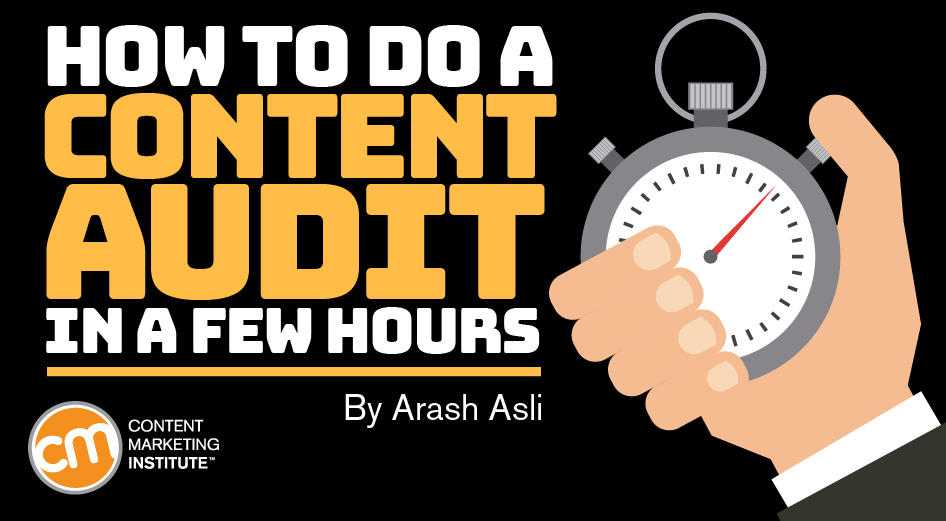Consider a condensed content audit. Monthly condensed content audits allow you to: Continually improve your content marketing strategy because you’re always seeing what’s working and what’s not Identify problems and proactively address them before they affect the content’s performance long-term Make them routine in your process, which likely will make yearly content audits easier With this in mind, here is how to do a content audit in three steps and in just a few hours – maybe even less. The point is to set in motion the opportunity to evaluate your content more regularly. Choose three metrics to measure Narrow your attention to the most important metrics that connect to your goals at the time. TIP: When regularly conducting condensed content audits, you can pick the same metrics each time or pick new ones depending on your goals at the time. Label each column with the data point, including: Assess the data and make notes for action The next step is to assess your data – to look for trends. Or this content performed adequately in two of three categories so it receives a C. In other cases, your choice of letter may be subjective. Takeaway The condensed content audit looks much like a typical content audit, but the pared version is designed to improve the results of your content marketing strategy more frequently. Lastly, what’s great about the condensed content audit is that it gets you and your team in the habit of doing audits more often so when it’s time to do your annual audit, it will be like second nature.

Content audits are about as popular as colonoscopies but they’re just as necessary to health – in this case, the health of your content marketing strategy.
But you likely dread the tedious, time-consuming annual content audit, and reliably and predictably put it off (and sometimes never get it done.)
What if you could do a content audit in only a few hours? Impossible, you say.
Consider a condensed content audit. It’s a fresh approach that allows you to more regularly provide actionable insights into what type of content is performing best to inform your upcoming activities.
Condensed content audit explained
Condensed content audits are not meant to replace the comprehensive content audits you should do every year.
The condensed content audit is a shortened form of the traditional content audit. It forces you to narrow your most important goals and determine whether they are being achieved – and how to improve what you’re doing.
Condensed content audits are designed to be done more frequently, preferably monthly or as often as you have the time.
Monthly condensed content audits allow you to:
- Continually improve your content marketing strategy because you’re always seeing what’s working and what’s not
- Identify problems and proactively address them before they affect the content’s performance long-term
- Make them routine in your process, which likely will make yearly content audits easier
With this in mind, here is how to do a content audit in three steps and in just a few hours – maybe even less.
Before I delve further, let’s get one thing out of the way – the condensed content audit is flexible. The point is to set in motion the opportunity to evaluate your content more regularly.
Now, let’s begin.
1. Choose three metrics to measure
Narrow your attention to the most important metrics that connect to your goals at the time. By looking only at a handful of metrics at a given time, you can draw insights more easily.
Perhaps you want to measure conversion data. Maybe you want to measure traffic. Maybe you want to measure engagement (such as time spent on site or social shares). You could even assess aspects of your SEO strategy.
TIP: When regularly conducting condensed content audits, you can pick the same metrics each time or pick new ones depending on your goals at the time.
2. Take inventory of your content
Create a spreadsheet just as you might for a traditional content…

COMMENTS